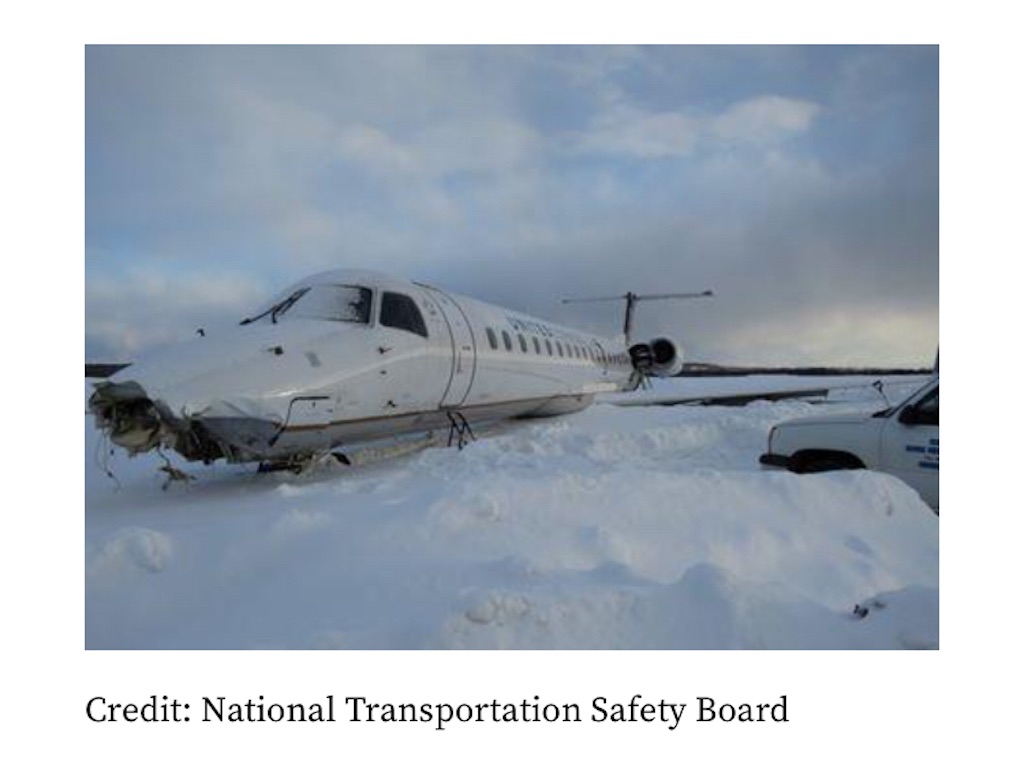Faulty Localizer Leads To Mishap, Part 1

今日の英語の習慣化の題材は...
NTSB(National Tranportaion Safety Board): 米国国家運輸安全局)からの事故報告結果から...
着陸進入中に航空機が滑走路へのガイダンスを受信する信号ミスで事故を起こしたという事故調査のニュース。
英語のお勉強ですので、Part1とかに関わらずお読みください。
When it comes to flight and navigation instruments, there are few absolute certainties. Even though most instruments are fairly reliable, they are all susceptible to error.
Altimeters can be high or low, airspeed indicators inoperative, attitude and heading indicators can roll over or spin down. Pilots learn to look for the signs of these failures.
One of the instruments pilots have learned to trust is the instrument landing system (ILS).
If the frequency is tuned and identified, there are no warning flags, and the flight director pitch and roll steering bars are centered, you can feel pretty confident that you are on centerline and on glidepath, in a position to land right in the center of the runway.
A regional jet crew attempting to land in Presque Isle, Maine, found out that even the trusty old ILS can sometimes lead you astray.
On March 4, 2019, CommutAir Flight 4933, an Embraer EMB-145XR, struck the snow-covered infield to the right of Runway 1 at Presque Isle Airport (KPQI) while attempting to land.